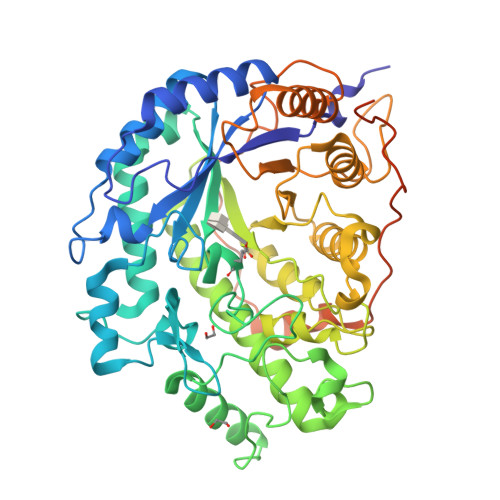Chemical genetics and cereal starch metabolism: structural basis of the non-covalent and covalent inhibition of barley beta-amylase.
Rejzek, M., Stevenson, C.E., Southard, A.M., Stanley, D., Denyer, K., Smith, A.M., Naldrett, M.J., Lawson, D.M., Field, R.A.(2011) Mol Biosyst 7: 718-730
- PubMed: 21085740
- DOI: https://doi.org/10.1039/c0mb00204f
- Primary Citation of Related Structures:
2XFF, 2XFR, 2XFY, 2XG9, 2XGB, 2XGI - PubMed Abstract:
There are major issues regarding the proposed pathway for starch degradation in germinating cereal grain. Given the commercial importance but genetic intractability of the problem, we have embarked on a program of chemical genetics studies to identify and dissect the pathway and regulation of starch degradation in germinating barley grains. As a precursor to in vivo studies, here we report systematic analysis of the reversible and irreversible inhibition of the major β-amylase of the grain endosperm (BMY1). The molecular basis of inhibitor action was defined through high resolution X-ray crystallography studies of unliganded barley β-amylase, as well as its complexes with glycone site binder disaccharide iminosugar G1M, irreversible inhibitors α-epoxypropyl and α-epoxybutyl glucosides, which target the enzyme's catalytic residues, and the aglycone site binders acarbose and α-cyclodextrin.
Organizational Affiliation:
Department of Biological Chemistry, John Innes Centre, Colney Lane, Norwich, NR4 7UH, UK.



















